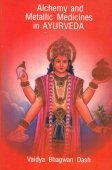Apit: 7 definitions
Introduction:
Apit means something in Hinduism, Sanskrit. If you want to know the exact meaning, history, etymology or English translation of this term then check out the descriptions on this page. Add your comment or reference to a book if you want to contribute to this summary article.
Apit has 5 English definitions available.
Languages of India and abroad
Sanskrit dictionary
[Deutsch Wörterbuch]
Source: Cologne Digital Sanskrit Dictionaries: Böhtlingk and Roth Grosses Petersburger WörterbuchApit (अपित्):—
Source: Cologne Digital Sanskrit Dictionaries: Sanskrit-Wörterbuch in kürzerer FassungApit (अपित्):—Adj. versiegt , vertrocknet.
Sanskrit, also spelled संस्कृतम् (saṃskṛtam), is an ancient language of India commonly seen as the grandmother of the Indo-European language family (even English!). Closely allied with Prakrit and Pali, Sanskrit is more exhaustive in both grammar and terms and has the most extensive collection of literature in the world, greatly surpassing its sister-languages Greek and Latin.
See also (Relevant definitions)
Starts with (+5): Apita, Apitai, Apitaka, Apitam, Apitanam, Apitar, Apitarmapitakam, Apitay, Apitaya, Apitekam, Apiteyam, Apithiyati, Apiti, Apitika, Apitri, Apitridevatya, Apitrijna, Apitrika, Apitrya, Apittam.
Ends with: Kapit, Nadapit, Napit, Pampasapit, Prasthapit, Samaapit, Sanlapit, Shapit, Sthapit, Vyavasthaapit.
Full-text (+245): Kuhula, Avata, Yajnakunda, Narakakunda, Bhumidundubhi, Pit, Garaga, Talla, Khashtem, Kholaga, Khalagi, Honda, Bhumigarta, Avapata, Rishyada, Kupa, Guha, Khalaga, Guthakupa, Angarakasu.
Relevant text
Search found 103 books and stories containing Apit, A-pit; (plurals include: Apits, pits). You can also click to the full overview containing English textual excerpts. Below are direct links for the most relevant articles:
Ramayana of Valmiki (by Hari Prasad Shastri)
Chapter 4 - Rama and Lakshmana slay the Demon Viradha < [Book 3 - Aranya-kanda]
Chapter 31 - Ravana goes to the Banks of the Narmada River < [Book 7 - Uttara-kanda]
Chapter 69 - Prince Bharata’s inauspicious dream < [Book 2 - Ayodhya-kanda]
Rasa Jala Nidhi, vol 1: Initiation, Mercury and Laboratory (by Bhudeb Mookerjee)
Part 3 - Burning pits (puta or samputa) < [Chapter VI - Laboratory equipment]
Part 1 - Alchemical apparatus (yantra) < [Chapter VI - Laboratory equipment]
Part 2 - Alchemical crucibles (musa) < [Chapter VI - Laboratory equipment]
Chaitanya Bhagavata (by Bhumipati Dāsa)
Verse 3.5.607 < [Chapter 5 - The Pastimes of Nityānanda]
Rasa Jala Nidhi, vol 2: Minerals (uparasa) (by Bhudeb Mookerjee)
Part 5 - Extraction of essence from Rasaka (calamine) < [Chapter VII - Uparasa (8): Rasaka or Kharpara (calamine)]
Part 3 - Incineration of kapardi (cowrie) < [Chapter XIX - Uparasa (20a): Kapardi or Kapardaka (cowri or marine shells)]
Part 2 - Purification of Gandhaka < [Chapter VIII - Uparasa (9): Gandhaka (sulphur)]
Rasa Jala Nidhi, vol 3: Metals, Gems and other substances (by Bhudeb Mookerjee)
Part 9 - Extraction of oil from seeds of Shami < [Chapter XXXII - Extraction of oil from seeds]
Paraskara-grihya-sutra (by Hermann Oldenberg)
Related products
